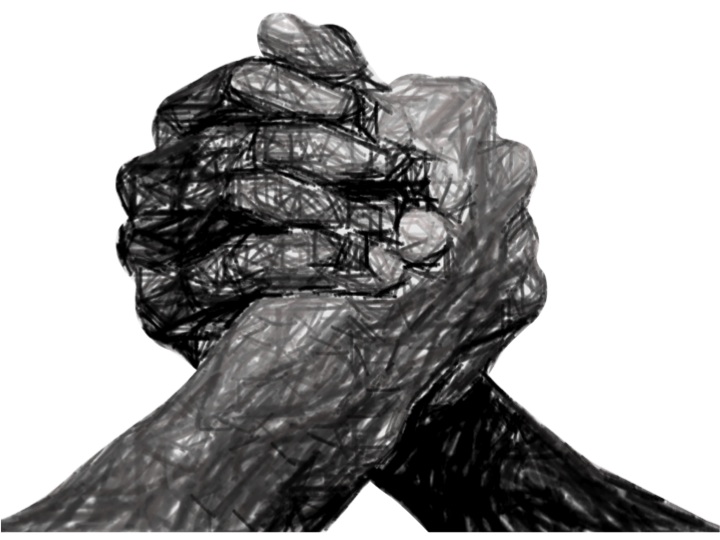
Harvard University
The Politics of Personal Data
Gov 1430

|
Harvard University The Politics of Personal Data Gov 1430 |
Lab 1: Detecting Unusual Crowd Behaviors
Goal.
In this lab, you will design experiments that help inform and construct an overall surveillance system.
Suggested Readings
Problem.
Can you construct a system using publicly available resources (e.g., webcams, blogs, and tweets) to predict unusual crowd behaviors?
Recent research by Professor Gary King, Jennifer Pan and others shows that the Chinese government tends to censor collective activities. By tracking online posts, they observed and documented the kinds of posts that the government would routinely take down. Surprisingly, redacted posts were not those spouting negative criticism of the government, its leaders or its policies, but more often about activities that may mobilize citizens to collective action.
Professor King wonders whether we can use publicly available webcams, blogs, and other publicly available information to predict unusual crowd behaviors. Unusual patterns in the appearance, absence, or changes in the appearance of people or vehicles can indicate the occurrence of an accident, a protest or a public event.
Meet ten professors who have hypotheses that question Professor King's vision and webcam surveillance.
Professor Alice asserts that there are not any publicly available webcams in a place like China that could be used for the task. (General: surveillance is not possible)
Professor Bob asserts that the amount of disk storage and computing resources necessary to store images from webcams makes it infeasible, even if it were limited to China. (General: infeasible for technology to capture all the information needed)
Professor Cathy asserts that even if you capture the images, there is no way to have automated processing to determine whether unusual patterns are occurring. (General: infeasible for technology to achieve the stated goal)
Professor David asserts that even if you find webcams, you won't know where they are located in the physical world sufficient to link the webcam to any known real-world events from other sources. (General: surveillance is spotty, not comprehensive)
Professor Evelyn asserts that that privacy is dead because of webcams and other surveillance technologies being publicly available.
Professor Frank asserts that this technology could be used against the United States by terrorists.
Professor Gail asserts that this technology is an example of imposing American standards on the world. (It is okay to photograph people in public in the United States without their permission.)
Professor Harold asserts that webcam [surveillance] technology is capable of continuing to revolutionize our lives further and we should encourage broader adoption.
Professor Irene asserts that webcams [surveillance technologies] make the United States vulnerable to terrorists.
Professor Jack asserts that using defaults on popular webcams makes it easy to locate these webcams online, allowing us to peep into the private lives of Americans. (General: surveillance can be done by anyone)
Professor Sweeney wonders whether you can prove or disprove the claims of these professors. Your task for next week is to design an experiment that when it is done, will reveal the answer. You do not have to do the experiment you design, just describe it sufficiently for evaluation as to its credibility and utility and effectiveness in answering the question.
Activity. Experimental Design
Divide into 10 groups (about 4 students each). There will be one group for each of assertions made by the Professors. The goal of your group is to report on an experiment that could test your assigned professor's assertion. Gather in your group and design a way you might design an experiment. Choose a group leader who will be responsible for writing your experimental design and making the presentation next week. In your group, brainstorm over possible approaches. You do not have to actually do the experiment for Tuesday, just design it. You should include enough credible evidence in your write-up to make an expected outcome for your experiment. Then, on Tuesday, your group leader will make a 5 minute presentation describing your group's plan. Your group will also submit a short (3-5 page) document describing your experiment.
Paper and Presentation (Due Thursday. Tuesday no school due to snow.)
Submit a short paper (3-5 pages) from your group describing the experiment you will do. Make a 5 minute presentation of your experimental design. Be sure to include the names of all group members on the paper.
In this course you will write scientific papers. The basic parts of the scientific paper you will write for this assignment will have four parts: an Abstract, Introduction, Methods, Results, and Discussion. These should be the headings in your writeup. The Abstract section should be a one paragraph summary stating what you intend to show with the experiment, how and the expected outcome. The Introduction describes why your experiment is important. You should not assume the person reading the paper knows anything about this assignment. Include references and use authoritative sources to make your points. You should not make any sweeping or unsubstantiated statements in your writing. End the Introduction with a description of the hypothesis you will test. The Methods section is where you describe the experiment you would do to test the hypothesis. You will not likely have results for the experiment, though you may likely have preliminary results that provide an expected outcome for your experiment. Use the Discussion section to explain why this test would prove or disprove the hypothesis. Include at least one statement about the limits of your approach.
The supplement contains make-up material for this Lab and optional information.
Lab Follow-up Paper (Due Tuesday 2/17 by midnight CANCELLED due to schedule changes resulting from snow emergencies) In class we talked about a follow-up paper. One will not be due. Enjoy!
Copyright © 2015 President and Fellows
Harvard University
| Data Privacy Lab